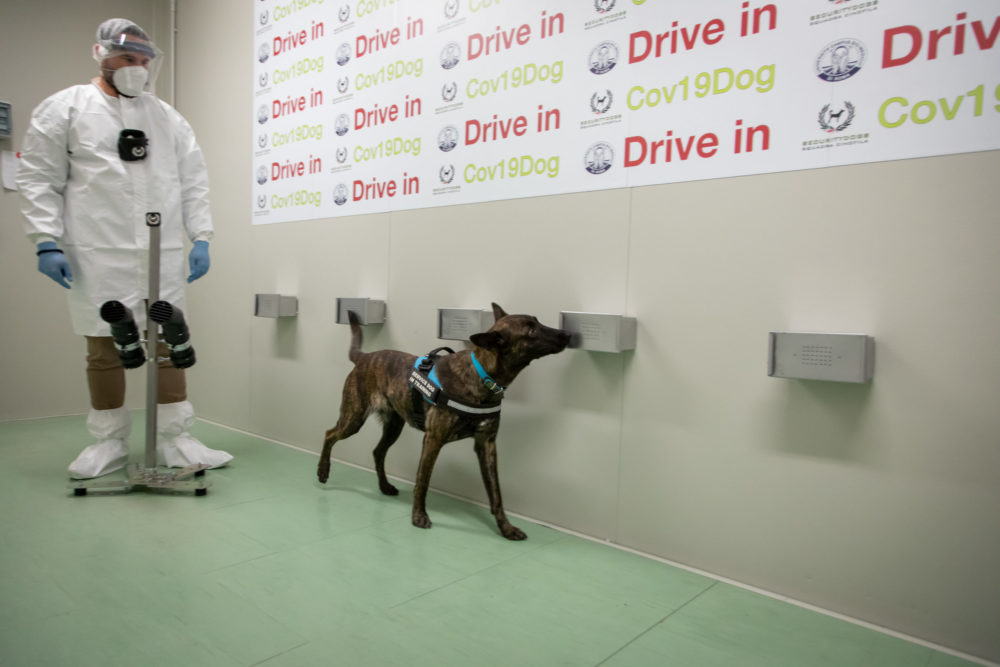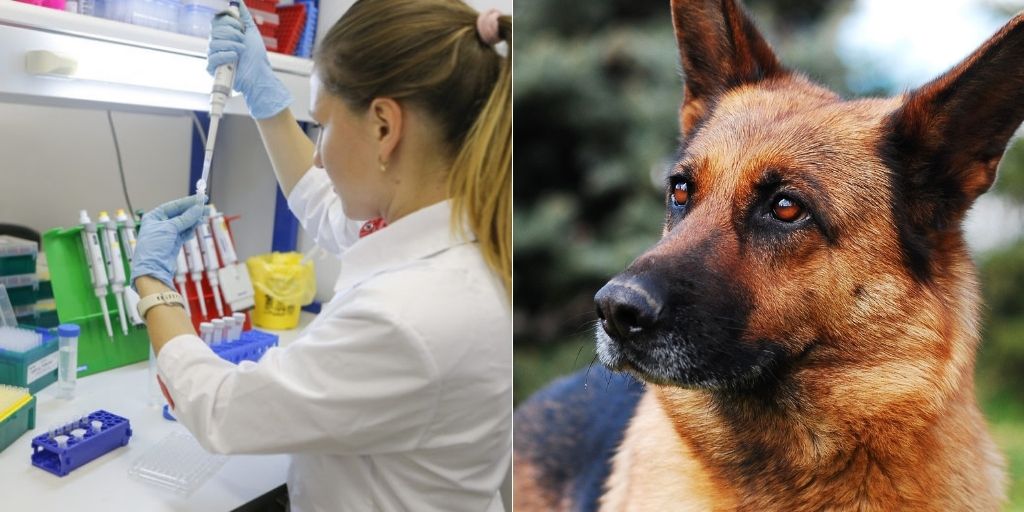
Italy, dog units being trained to sniff out Covid-19 positive people
Dog units capable of detecting the disease through sweat in seconds. If the project is successful, they can be used for Covid-19 screening at large events, cinemas, stadiums, and airport boarding gates
Can trained dog units recognize a Covid-19 positive subject using only its sense of smell?
This is the question to be answered by the first study to be carried out in a university hospital to train dogs for rapid screening of potentially Covid-19 symptomatic and asymptomatic individuals.
The research project was launched in Rome at the Drive-in Campus test at the Policlinico Universitario Campus Bio-Medico and will be carried out for the first time in the world on a statistically relevant sample of more than 1000 patients at the University Campus Bio-Medico in Rome.
“The efficiency of the dog’s sense of smell will be tested with molecular tests for the diagnosis of Covid-19.
The procedures will allow the traceability of the work and will be carried out in complete safety for the operator, the dog, and from a scientific point of view.
Thanks to the collaboration with Ngs Srl, which is engaged in the use of dogs trained for explosive safety in emergencies and large events, from April to June 2021 the dog units will be specially trained by professionals active in the field of safety & security, to recognize the presence of Covid-19 in the sweat of patients who every day go to the Drive-in Campus test of the Policlinico Universitario Campus Bio-Medico, in Via Regdo Scodro 42 to perform the swab”.
The training will last six to eight weeks, after which the dogs from the dog units will go into service as an experiment with a sample test of more than 1000 patients
Inside a 40-square-meter container dedicated to the project, the dog will, in full comfort and safety, sniff the samples containing the patients’ sweat.
The animal will never come into direct contact with the biological substance.
The patient will perform a self-sampling of sweat with a gauze which will then be placed in an anonymous container with an identification number corresponding to the patient.
The dog handler will hand the sample to the dog, which, thanks to its training and its extraordinary sense of smell, will give its response to the presence of Covid-19 in a few seconds.
The operator will record the test result as positive or negative in a test log.
We are training our dogs to recognize the presence of Covid-19 in the samples collected at the Covid Center,” explains Massimiliano Macera, managing director of Ngs.
“Inside the container, the dogs will be presented with boxes specially designed for the Policlinico Universitario Campus Bio-Medico project, inside which will be the samples to be processed. Everything will come after an initial conditioning phase designed to ensure maximum safety for operators and dogs working with biological material.
To practice developing sensitivity to the virus, the dog will go through the metal boxes and when it detects the presence of Covid-19 it will report it precisely but discreetly and receive a prize.
Looking ahead, if the project is successful, it will be possible to use the trained dogs in urban settings for Covid-19 screening at large events, at cinema entrances, stadiums, and airport boarding gates, with the aim of jump-starting life together in those areas where crowds of people gather.
Detection dogs are now used in numerous fields.
![]() Canine units are already used in many other activities
Canine units are already used in many other activities
In the health sector, for example, they are used to detect viral or bacterial infections: the rate of accurate reports is between 77 and 92.6 percent.
The World Health Organisation sets a threshold of 75% for the reliability of diagnostic tests to detect Clostridium bacteria.
So far, two laboratory studies for the detection of Covid-19 with trained dogs have been carried out in Europe: The first, carried out by the Ecole Nationale Vetérinaire d’Alfort and the Université Paris Est, achieved an accurate detection rate of between 83 and 100 percent using sweat samples.
The second, from the Universities of Hanover and Hamburg and the Central Institute of medical service of the German Armed Forces, achieved an average exact detection rate of 94 percent using saliva samples.
Read Also:
A Dog Donates His Blood To Save A Puppy. How Does A Dog Blood Donation Work?



